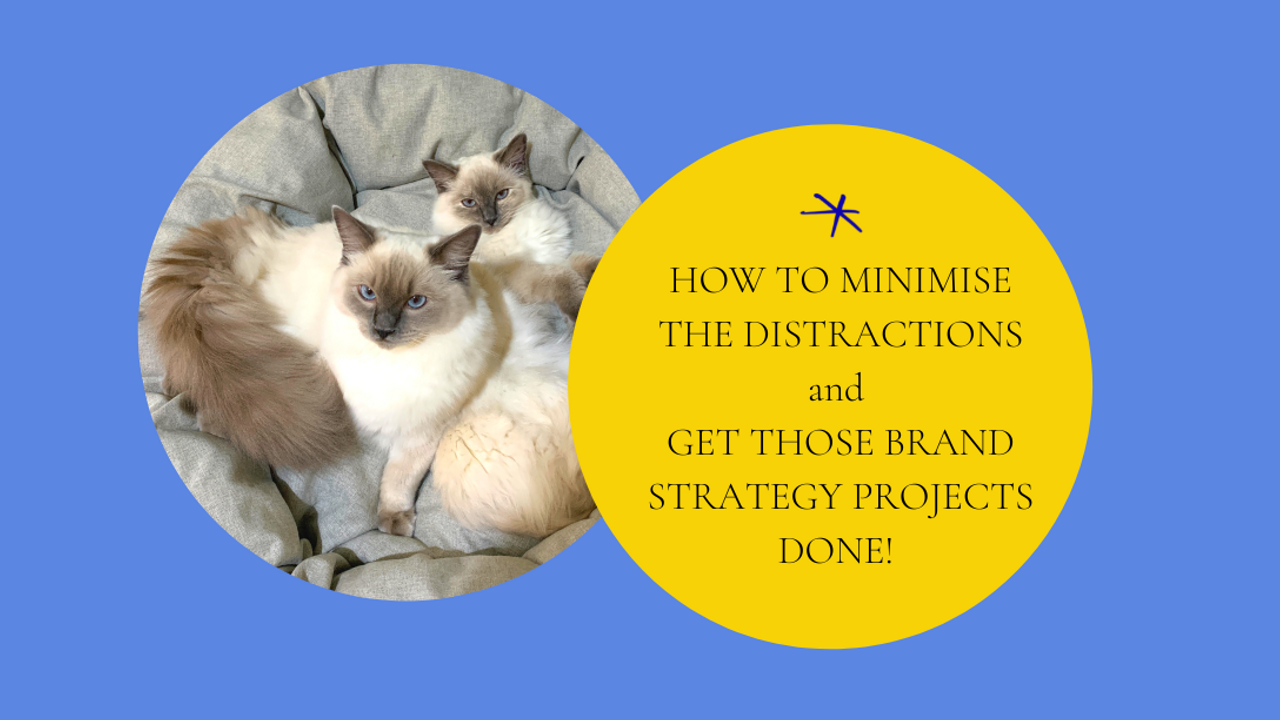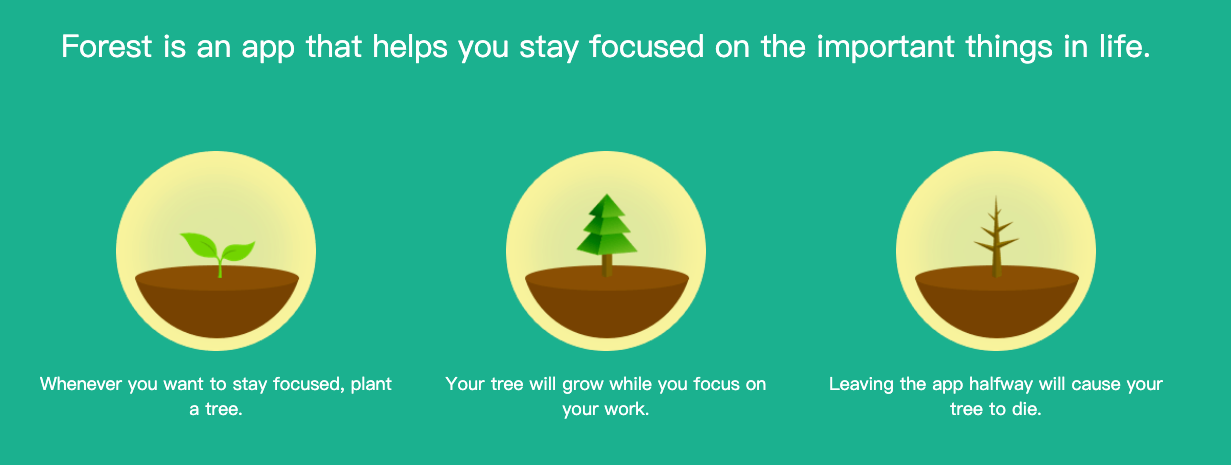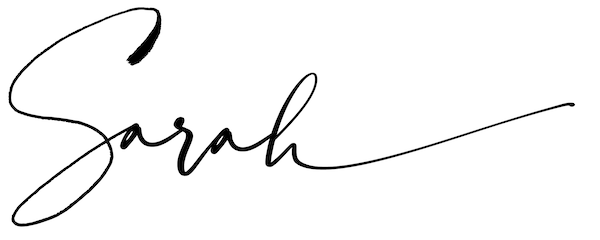Time efficient brand strategy. How to get those projects DONE!

These are my cats, Coco and Cotton.
Just two of a multitude of distractions that can mean brand strategy projects for my clients may not get done as efficiently as I’d like.
As much as I LOVE creating brand strategies, they can be a bit of a slog. And a recent survey of the people on my newsletter showed that the topic of being ‘brand strategy efficient’ was one people wanted some guidance on.
So here’s what I’ve learnt, the hard way, to shortcut this process for you.
How to get brand strategy projects done more efficiently
1. Read what you need to read, only when you need to
I used to be so guilty of this one. A transcript of an interview would come in that I needed to analyse later as part of a report; I couldn’t resist a quick skim through.
Flicking through a book or article that I wanted to pull from for a blog in a month’s time.
An email that I’d already scheduled to deal with tomorrow.
An article that I'd popped into my reading list for later, but still skim-read.
Reading background documents from a client as soon as they came in.
All little bits of time loss.
So be more focused with your time.
Avoid the temptation – pop it in your reading list, schedule it for later, just don’t let it take you off course.
2. Use the Pomodoro 50 technique
Set a timer for 50 minutes. During that time you can’t do anything else other than focus on the task at hand. No looking at email, answering WhatsApp, browsing the internet for present ideas…
Then after the 50 minutes, get up. Stretch, breathe – do some squats – release the tension in your shoulders and posture.
Pomodoro is typically 25 minutes, but 50 minutes serves me better for those problems you need to crack in brand strategy that need some deep thinking. It's a surprisingly powerful way to create impulse control and can also be fun AND help the planet – as the Forest app shows.

The idea is that every task is represented in the app by a tree and as you work on your task, your tree grows. But if you abandon your task, your tree dies. So the goal is to grow a forest by constantly adding tasks and completing them. Forest team partners with Trees for the Future, so when you spend virtual coins you earn on the app, Forest team donates to our partner and creates planting orders for real trees. We all love a win-win.
Or just go retro with the tomato timer that inspired the technique.
Brendon Burchard - author of High Performance Habits also suggests chunking your work sessions into 50 minutes, and then taking 'peace breaks' every hour:
- Take 3 minutes.
- Bounce in place.
- Close your eyes and take 10 deep breaths.
- Put your hands behind your head and put pressure down to your collarbones. Do this 10 times
Then set that 50 minutes and go again.
3. Build in time to think freely
I don’t know about you, but I don’t feel ‘free' sitting at my computer. Walking around in nature – absolutely. Taking a long bath. Yup. Sitting in my comfiest chair with a coffee. For sure.
These are the moments when great ideas, particularly when you’re at the point of writing the answers to the brand strategy questions, are more likely to come up, rather than when you’re staring at the screen, pressurising yourself to write something. Certainly ones that require more divergent thinking than convergent thinking. So free up your ways of working, and build time in your deliverables plan and calendar to be able to take those walks and mull things over.
4. Stop working on it
Yes – I know you can’t quit a deadline, but taking a break, even a walk around the block, creates a sense of “psychological distance" that research shows (and 20 years of doing this has proven to me) can really help. Taking a nap or just daydreaming can also be useful – IF you’ve done some deep thinking on the project first.
5. Use brand strategy analysis frameworks
Instead of just sitting down and reading tons of ‘stuff’ - the research reports, transcripts, background documents, competitor websites - do it with an analysis framework to sort your findings.
You won’t remember everything you’ve read and there’s nothing worse than going back again and again to things you’ve already looked at (see point 1 above). In Brand Strategy Academy I provide analysis frameworks for customer research, company research and competitor research to help you narrow the field each time, moving forward only with the core insights you need to shape the strategy.
Structuring before you start can save heaps of time.
Highlight, cut, paste, and move on.
6. Use tech to help in the research phase
Yes - you need to do some thinking, and sometimes doing that with a pen and paper is the best place to start. But consider partners like Rev or Searchie to transcript all your interviews. Just record them on the voicemail function on your phone or as a video file, upload your files, and they do the rest. Build the cost into your proposal for clients.
You'll be a better interviewer if you're just focusing on the conversation and actively listening rather than trying to scribble notes at the same time. And the transcripts make it easy to bring quotes into your presentation, and do the reflection you need on what you've heard.
7. Don’t tidy up before you start
Here’s a more light-hearted one to leave you with. Don’t tidy up before you do your creative thinking. Research led by Kathleen D. Vohs of the University of Minnesota showed that:
Research participants in a room where papers were scattered on a table and the floor came up with 5 times more highly creative ideas for new uses of ping-pong balls than those in a room where papers and markers were neatly arranged. A disorderly environment seems to aid creativity by helping people break from tradition, order, and convention.
I shared this little snippet with my neat-freak husband. (We're a good balance…)
Hope this helps!
If you’re on my newsletter already, keep those topic requests coming in. And if you’re not – come join us! You can get access below.

Get brand strategy smarter in 5 minutes a week
Join our weekly newsletter. No fluff. Sent Fridays.
By clicking the button, you agree to receive the 'Brand Strategy Smarter' newsletter and marketing emails from Brand Strategy Sarah about our products and services. Unsubscribe at any time.


